
|
|
 |

|


|
Picture Quality Price Screen Type Screen Size Screen Resolution Features Design Accessories February 1, 2008 HDTV Solutions I've seen those blank stares when I walk into the television section of a consumer electronics store. There you are - assaulted by a wall of HDTVs all playing the same program. And for the life of you, all those flat screens look very seductive, but still pretty much the same. How do you decide? Where do you begin? It's easy to become flustered in the presence of this chorus line of sexy, beautiful models with their thin bezels and full HD measurements. If you begin to hyperventilate, just imagine their parents, those chunky boxes with knobs sticking out. 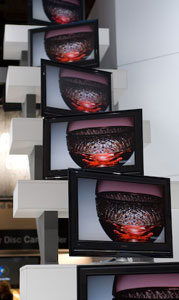 So let's start with this simple statement. It's a TV. Nowadays, they are bigger and flatter then they were in the 20th Century. They are preceded by HD, but they're still televisions. Whether you grew up watching The Honeymooners or Moonlighting, Bonanza or Buffy the Vampire Slayer, you probably have purchased one or two TVs in your life. Buying this high definition television shouldn't be any different. It's a TV. And despite all the technological mumbo-jumbo, how you decide on what HDTV to buy really isn't any different than it was ten or twenty years ago. All of us want to think that we are making a wise, informed choice and are getting our money's worth. So let me discuss a few factors that you may wish to consider. High Definition vs. Standard Definition Before we begin, we need to establish a couple of basic terms. The HD in HDTV stands for high definition. In comparison, those old boxy TVs that we grew up with are standard definition, (SD), though they were never called that because there was no HD. Without be too technical or exact, the picture that we see on a TV screen is made up of thousands of little dots called pixels. SD TVs use fewer pixels to create a picture, which means less detail - or definition - than an HDTV. More definition translates to a sharper, cleaner, finer image - a "honey come look at this" humdinger of a picture.
Definition for TVs is stated in terms of resolution. When you go shopping, you will probably run across these two common resolution numbers, 720p and 1080p. As you would guess, a 1080p TV uses more pixels than a 720p TV. Both are considered high definition TVs. (For comparison, standard definition is usually stated as 480i or 480p. I don't even want to get into i, interlace, and p, progressive.) I will discuss resolution as a factor in choosing a TV later. To an extent, buying TVs in 2008 is easier than it used to be because almost nobody makes standard definition TVs anymore. If you go into a store, you really have to search for them. So if you are buying a new model TV, about your only choice is an HDTV. In a couple of years, we will simply drop the HD tag and go back to calling them TVs. Picture Quality - Minding Your P's & Q's For me, the foundation for judging any HDTV is picture quality, which cannot be reduced to one characteristic like sharpness or contrast or color. Picture quality is a combination of all those and more. It's the gestalt. When you experience great picture quality, you'll nod your head and think, "Damn, that's what all this hubbub about HDTVs is about." The problem is that picture quality is subjective. For example, I'm particularly sensitive to overly colorful skin tones, so a pleasing picture to me may seem way too desaturated to you.
In my reviews, I will give you my opinion about a TV's picture quality, but you're the one that has to live with your choice. And the real fly in the ointment is that it is really difficult for you to judge a TV's picture quality by strolling through the HDTV aisles in a big box store - even harder online. If you can, I would suggest that you carry your favorite DVD with you and find a store that you can play it on a few TVs. If nothing else, get your mitts on the remote control and take the TV for a spin around the Setup menu. I know that idea causes dread in the hearts of salesmen; but if you are seriously shopping, then they should be glad to help.
One last thing before we move on. This is a guide. I will not tell you which specific HDTV to buy. There are way too many HDTV models out in the marketplace and I only feel comfortable recommending TVs that I have reviewed. If you want specific suggestions from me, look for the Highly Recommended logo on a review. Price Let's continue this HDTV Buying Guide with what is often the major consideration in buying an appliance - cost. For most of us mere mortals, we need to decide how much we want to spend. Without some dollar limit, strolling into the HDTV section of the store (whether brick and mortar or online) can lead to a major household budget buster. I'll discuss price of TVs in terms of screen size, screen type, and screen resolution in the following sections. For now, let's talk about cost, near term and long term. Beyond the price of the TV, before you leave the store you will be accosted with a few other expenses that you should factor in - cables, wall mounts, transportation, installation, and warranties. Rather than dive into a long discussion on cables or wall mounts at this point, please see the Accessories section at the end of this article.
If you are buying at the local big box store down the freeway, you will have to transport that lovely toy to your house. And if we're talking about any screen much larger than 32", its box probably won't fit into your Prius. It may not even squeeze into your Escalade. Hopefully, you have a good friend with a strong back and a cargo van. If not, you may want to consider using the store's delivery and installation service. Often installation is priced reasonably and packaged with the TV as an incentive. Do the math, only you can to decide if it is worth it. Of course, if you are purchasing online, then shipping to your door will be calculated into the final price. Unless it is otherwise stated, don't be surprised if the delivery man tells you that there will be an extra charge for maneuvering the box into your TV room or upstairs into the bedroom. Most retailers will try to sell you a warranty that can amount to a sizeable chunk of change. The general consensus is that warranties are not a great idea when it comes to TVs. You can read more about warranties in an article. "What's with Warranties?" Finally, depending on your disposition, when you are buying a big ticket item like an HDTV, negotiation opportunities may arise. With intense competition, the profit margins for retailers on the TVs are fairly thin, but you may find some wiggle room, especially on prices for warranties and installation. Now, once you have your HDTV home safe and sound, you still have one more cost that can be substantial over the long term - HD content. High Definition Content I feel so strongly about the importance of supplying your HDTV with high definition programming that I will make this statement. Don't buy an HDTV unless you plan on feeding it high definition content. Stick with your old standard definition TV. Let's take a moment and talk about what HD programming is because this topic confuses a lot of people. Traditionally, TV programs have been broadcast to us in standard definition. Luckily, we use the same resolution rating system for programs as we do for TVs. In the U.S., the resolution of standard definition broadcasts is 480i. In comparison, HD programs are either broadcast at 720p or 1080i resolution.
Even though most prime time scripted shows like Heroes or Ugly Betty are being transmitted in HD, many daytime shows and reality programs are still being broadcast in standard definition. To confuse the issue even more, the HD programs are also being telecast in SD. The Super Bowl is a great example. It will be broadcast in both HD and SD. Now this is the important bit. Let me state this simply. Just because you have an HDTV, you don't magically receive high definition content. Let's say that you buy an HDTV today. If you are subscribed to a cable or satellite system, you should contact your provider and make sure that you have all the equipment that you will need to receive HD signals. You might also have to pay more for an "HD programming tier." If you don't have cable or satellite, currently, the deals being offered by all the competitors are quite attractive. If you watch stations like ESPN or the Discovery Channel, I would suggest that you subscribe to one of these services. Of course, you can hook up an antenna and capture a signal off the air like we used to do before cable and satellites. This technique will only work if your local stations broadcast digitally. And it only works with broadcast stations, meaning ABC, NBC, CBS, Fox, and the CW. You can't receive any of the cable channels like ESPN with an antenna. You can read more at "Feeding Your HDTV a High Definition Diet". Please be aware that many networks like ESPN will broadcast the same game in HD and SD. Make sure that you are tuned to the HD signal. You will definitely notice the difference. And that's the whole point. HDTVs look their best when they are displaying HD content. Before we leave this topic, I need to bring up one more term that is causing some confusion. DTV stands for digital television and though related to HDTV, they are not interchangeable terms. DTV is a method of broadcasting TV signals over the air. The U.S. Government has mandated that all local TV stations switch to digital transmissions on February 17, 2009. After that time, you will not be able to receive TV over the air without a digital tuner. You can read about it at "The Switch and You". The bottom line for people buying new TVs is that all TVs sold now come with digital tuners, labeled ATSC. If you don't plan on retiring your old TV set, then you should definitely read the article. Now, if you only want an HDTV for watching DVDs in your home theater, you still should be feeding it HD content. If you have a library of SD DVDs, then at least purchase a DVD player that processes the standard definition signal and converts it to HD.
If you are a true aficionado, then definitely consider a Blu-ray or HD DVD player as a source of true HD content. (See "HD-DVD vs. Blu-ray Update".) Once again, if you are not going to make the commitment to provide HD programming, I would seriously suggest not buying an HDTV. But if you are ready to take the leap, let's move on to the more commonly discussed factors. LCD vs. Plasma vs. Microdisplay Almost all of the HDTVs available right now fall under one of these three categories of displays. (If you are looking for a technical explanation of each, you're reading the wrong article.) If your only concern is to buy a TV that will display a great looking HD image, the best models in all three categories will deliver the goods. So, you may be asking, "Why care about LCD, Plasma, or Microdisplay?" Well, if you ask the proponents of one or another, they will wax eloquent and occasionally belligerently about the superior qualities of their favorite. Many of the advantages that one display had over another has narrowed in the past couple of years. Let's start with a simple point that shows how the designers are aware of a shortcoming, make the necessary change and in the process improve their product. Take Microdisplays, which used to be called RPTVs (rear projection TVs), because they have a projector system inside them. The problem used to be that the projector light bulb would burn out every two or three years depending on how much TV you watched. Not a big issue for some people, but a drawback. Many newer Microdisplays now employ lighting technologies that negate the need for replacing the bulb. Mitsubishi has even introduced for 2008 a Microdisplay that uses a laser as its light source. The real heated debates are over the perceived advantages of either Plasmas or LCDs. Especially in this arena, I have seen the differences dissipate.
For example, Plasmas historically had a better Contrast Ratio than LCDs. Contrast Ratio is simply a measurement that indicates a TV's ability to display the range of darks to lights. The theory is that the higher the Contrast Ratio, the deeper the blacks, the whiter the whites, the better the picture quality. A couple of years ago, Plasmas were kings with Contrast Ratios near 10,000:1. Now, you can find both top of the line Plasmas and LCDs spiraling up over 100,000:1. When we reach this range, only Superman could see the difference. And I don't want to confuse you with numbers. My point is that a lot of the old advantages of LCDs or Plasmas are fading away. And I don't think you can judge by numbers which TV you want to buy anyway.
Often your choice boils down to a much more subjective factor. For example, Plasma screens have a reputation for being more reflective than LCDs. This can cause some folks great anxiety especially if they see their table lamp reflecting in their brand new HDTV. Also it can be a problem during the daytime if your TV is in a room with a lot of windows. Personally, I don't notice reflections, especially when the TV is turned on. Also, if they did bother me, I would turn off the light and close the curtains. But like most competitive disadvantages, manufacturers are addressing the situation and producing less reflective coatings for Plasmas.
As I was researching this Buying Guide, different camps would point to Color Gamut charts or Refresh Rates to show that they were king of the hill. I always believe that the best test is what you see on the screen. (I mean that in an abstract sense. Please do not judge a TV by the overly vivid displays that assail you at your local big box store.) If you ask me, I lean towards Plasmas because I think I can perceive a better picture because of deeper blacks. But I have seen plenty of good looking LCDs that I would be proud to own. Sales figures in the U.S. show that LCDs are now outselling Plasmas with Microdisplays a distant third. Coming up, I will discuss some of the other characteristics that may give one an edge over the others. But before I do, I must mention a new display that is capturing a lot of headlines and turning a lot of heads, OLED. They look cool with their thin, thin screen. But Sony is selling the only model in the U.S. right now and it measures just 11" diagonally and it's not HD. Simply an HDTV OLED is currently not an option. Size Undeniably, screen size matters when buying an HDTV. But how big of TV do you need? How far away from the TV do you plan to sit? Five feet? Ten feet? If it's around 5', then the THX folks suggest a 50" TV. Then again, the SMPTE (Society of Motion Pictures and Television Engineers) guideline says that a 37" TV would work. (I cover viewing distances in much more detail in my article, "Pull Up a Chair".) If you're familiar with the old rules of sitting three or four times screen width away, then even the SMPTE suggestion may seem close, but remember we're talking about high definition images that can withstand close inspection.
One of the reasons that Microdisplays gained prominence in the marketplace and still can be a viable niche is their size to price advantage. Though the gap is closing under 50", Microdisplays still are a good value alternative if you want an HDTV in the 50 to 70" range. Older models had some picture quality issues, but many of the top of the line Microdisplays like the Samsung HL-T5689S that I reviewed hold up surprisingly well next to LCDs and Plasmas. The other slam against Microdisplays is that they are deeper than their HD brethren. Indeed, even now after they have slimmed down quite a bit, Microdisplays are still fatter (14" for the Samsung) than the diet conscious LCDs and Plasmas, which average around 4 to 5". But despite their girth, Microdisplays are lighter, 70 pounds for a 56" screen compared to around 110 pounds for that sized Plasma. Finally - and this can be a deal breaker - Microdisplays are not made to be mounted on a wall, unless you customize a shelf. Traditionally, if you wanted a TV over 40", Plasmas were the display of choice. In the last couple of years, new production facilities have started to churn out larger LCD panels, with 46" LCDs becoming more common. We are even seeing 52" and 57" LCD screen sizes. Prices in the marketplace constantly gyrate, but Plasmas have been consistently less expensive than a comparatively sized LCD, especially in the 46" and over range. And if you want a TV that is 60" or larger, you will find a precious few LCDs, though they are beginning to pop up. If you desire to be the biggest boy on the block, Panasonic does sell its 103" TH-103PF9UK Plasma for a paltry $70,000.
The playing field below 40" has been ceded to LCDs, which is one of the reasons they are gaining a sales lead. Though I just read a report that 32" Plasmas are selling well in developing countries. VIZIO is introducing a 32" model in the U.S. later this year. One trend that I track is what I call the sweet spot for HDTVs. As TVs become larger, they are incrementally more expensive. At some size, the price jumps more than usual. The size right below that is the sweet spot. Late last year, that spot was moving from 37 to 42" for LCDs. Let's face it, not everybody wants a large TV dominating their room. One solution is what I call a hybrid HDTV that also can double as a computer monitor, which is perfect for a bedroom, dorm room, or kitchen. I'm beginning to see a lot of 1080p hybrid LCDs in the 24" range. Resolution - 1080p or 720p? I tend to push Resolution down my list of factors for buying an HDTV because I think other characteristics are more important to my viewing satisfaction. For example, I would prefer a 720p TV that rendered skin tones well over a 1080p one that made everyone look as if they had high blood pressure. Of course, all other features being equal, I'll take the 1080p. 2007 was the year that many of the HDTV manufacturers began to heavily market the merits of 1080p, partially because they could yield a higher profit margin with the new TVs. So don't be surprised if a salesperson denigrates a 720p while steering you towards a 1080p TV. The big advantage of 1080p are all those extra pixels, which make for a sharper, more detailed image. Of course, if you are sitting too far away from the TV, your eyes will not be able to discern the difference between a 1080p image and a 720p. For a 50" TV, that distance is about 6.5'. (Again, I write about this in the "Pull Up a Chair" article.)
So don't shy away from a 720p TV especially if you are planning to sit a moderate distance away. In fact, some of my favorite TVs have been 720p Plasmas, which have exhibited almost three dimensional images because of their great contrast and black levels. You also may be able to find some seriously tantalizing values in 720p TVs as the focus shifts to 1080p models. If you are dead set on a 1080p HDTV, LCDs have adopted this resolution more quickly than Plasmas, which means that you will have a wider range of LCD models to choose from. Though I think that 2008 will be the tipping point for 1080p Plasmas just like 2007 was for LCDs. Features Features come in many flavors. Depending on your tastes you will probably focus in on one or two of your must-haves. For some, it may be as simple as a remote control that lights up. For others, it may be more technical like a 120 Hz frame rate. I will admit that when it comes to the proliferation of features, life used to be much simpler. But those less complicated TVs provide a good benchmark for your new purchase. If you are a traditionalist who just wants a TV to watch sports and your favorite prime time programs, then a lot of the new buzzword features shouldn't be that important to you. Luckily, a number of manufacturers have heeded your pleas and are producing no frills TVs that are also less expensive. Of course, purchasing an HDTV allows you to expand your horizons and I have found that a couple of new features have ascended to the top of my list.
I'm the guy in the TV section who is always peeking behind the equipment to see what extras the connection panel offers. Luckily, most TVs now provide an adequate number of audio and video inputs. In addition, I like to find a USB port on the connection panel. It allows me to attach a flash drive, (like the kind that comes in digital cameras), and load photos that I have shot. Viewing them in high definition splendor is highly rewarding. You usually can also playback MP3 audio files through this USB port. If you want to connect directly to your home network, some TVs now offer an Ethernet port. In the near future, I think we will be seeing more of this melding of home computer networks with your TV. The ability to access media assets located on your computer is compelling for many wonks. Right now, the software needs more sophistication, but we should see a breakthrough soon. I know others lust after picture-in-picture capabilities. I'm not a big fan, but if I need PIP, my satellite's set-top box has that feature.
Another hard-marketed new kid on the block is "120 Hz frame rate display". When implemented well, it smooths out fast moving action. I have witnessed video torture tests that cause the image to stutter or judder (imagine tiny text scrolling quickly across the TV screen), and yes, this 120 Hz feature does improve the image. Though, from my day to day viewing experience, I'm not bothered by this stuttering. If I am paying a premium for 120 Hz, I will look elsewhere to spend my money. Also, 120 Hz capabilities are a feature of LCDs. Plasmas aren't as susceptible to visible judder, so there are no 120 Hz Plasmas. And then, some features are more difficult to ferret out. For example, I find a well written manual to be invaluable. If you want to browse before you buy, often you can locate manuals online at the manufacturer's website. Since I need to tinker with picture settings, a well organized Setup Menu with responsive tools is manna from heaven. If you love to tweak, root through the manual and see what controls are provided. Brand If you are a loyalist, all you need to do is see your favorite logo stamped on the TV. Shopping is done, life is simple. I won't discount this method of choosing a TV, especially when Brand allegiance is based on a history of consistent quality and great customer service - not just nostalgia. Of course, in this corporate climate of mergers and acquisitions, Brand names have a tendency to disconnect from their historical roots. Also, you may miss out on a newcomer that offers quality products at a competitive price. Design I appreciate that these flat screen TVs are so much more appealing than the old bulbous TVs that demand you hide them in an armoire. The elegant sleekness of HDTVs has been warmly welcomed into many households. Still, I feel like we are back in the Model T era when Henry Ford proclaimed that "The customer can have any color he wants so long as it's black." We are seeing a crack in that black motif with Sony offering a range of color bezels for their BRAVIA series and Philips highlighting their new colorful illuminated frames.
Those divergences aside, the choice remains, matte black or glossy piano black. As you can imagine, this design challenge has not gone unnoticed. You can read about some of the solutions here. If size matters, the big wide frames make the boldest statements. But if you want to mitigate the blackness and volume, then pick a TV with a thinner bezel, which is the frame around the screen. This decreases the footprint of the TV without making the screen smaller.
Also the depth of televisions continue to shrink. LG is showcasing a 1.7" deep LCD, which is about the width of two fingers. Of course, if you don't plan on wall mounting, the TV's stand will add a few more inches to the profile. Accessories Audio I consider good audio to be a vital part of the TV viewing experience. I truly believe that a great audio system makes a home theater. Hallelujah! With that said, I have reviewed very few HDTVs that provide a worthy integrated sound system, even for normal TV watching. I have only reviewed one TV, the Bang & Olufsen Beovison 7-40, that included audio that could be rated home theater quality. I suggest that if you are upgrading to an HDTV, think about acquiring a dedicated audio system, which includes an AV receiver and a 5.1 surround speaker setup. If you are buying a new AV receiver, look for one that can accommodate and switch between multiple HDMI inputs. Cables If you plan to attach your TV to other pieces of equipment like the cable company's set-top box, a DVD player or an AV receiver, you will need cables. Please be forewarned. You cannot use the Composite video connections to transport your HD signal. On your TV, you must either attach to an HDMI input or the three Component (often labeled YpbPr) inputs. You have a choice. I would suggest that you use HDMI cables because they carry both the audio and video signals. One connection, one wire, less clutter. Now if your DVD player or set-top box does not have an HDMI output, then you will need Component cables. To connect the video, you use a three headed cable with Red, Green, and Blue ends. Audio requires another cable with Red and white ends.
The price range for HDMI cables is eye opening. I've seen 6' HDMI cables sell from $10 to $70. If you are not a discerning videophile, consider the more reasonably priced ones. If you think you have an eagle eye, then buy both and test if you can see a difference.
Wall Mounts When you see those ads of carefree young couples lounging around watching their HDTV mounted on the wall of their minimalist loft, you think what could be simpler than hanging a TV on a wall? Nothing - if you hire a guy to come in and snake all those video and audio cables inside the sheetrock. Wall mounts are fairly reasonably priced, the actual installation can be another matter. If you can't be talked out of placing your TV above the mantelpiece, please buy an articulating mount so you can tilt the TV down to where you are sitting. How to Use Our HDTV Database We spend considerable time and effort maintaining an up to date database of HDTVs, which you should find valuable in researching your TV purchase. If you look at the navigation list on the left of the screen, under Research are three different ways to access our database: Search by Brand, Search by Model, and Search by Features. The mother lode of data resides in the specification sheets for individual models like this one for a Sony BRAVIA model. The tabs on that page often provide more information. And you can compare different TVs by clicking on the "+ Add to Compare" feature. Happy hunting. Please send me your comments as I plan on updating this guide as new products and trends occur.
|
Bookmark:
![]() del.icio.us
del.icio.us
![]() Reddit
Reddit
![]() Google
Google
Reader Comments
Posted Jul 11, 2013 8:32:15 AM |
|
By Pam Constable |
|
Posted Nov 24, 2012 9:34:52 AM |
|
By gerald steinmetz |
|
Posted Jul 3, 2012 10:25:03 AM |
|
By richard kakiiza |
|
Posted May 2, 2012 9:16:22 AM |
|
By Farid ullah shah |
|
Posted Dec 29, 2011 12:02:40 PM |
|
By lewis black |
|
Posted Mar 26, 2011 4:35:26 AM |
|
By qassem |
|
Posted Oct 25, 2010 1:29:58 PM |
|
By billy |
|
Thanks!
Posted Aug 29, 2010 8:53:54 PM |
|
By Sigit Sudarmono |
|
Regards, Sigit
Posted Dec 16, 2009 8:26:35 PM |
|
By Sudesh Kumar Arora |
|
Posted Dec 16, 2009 2:40:36 PM |
|
By jorge hernandez |
|
Posted Nov 1, 2009 3:52:02 PM |
|
By Debbie Carroll |
|
Posted Oct 9, 2009 12:13:09 AM |
|
By Andi |
|
Posted Oct 3, 2009 10:03:34 AM |
|
By Tom |
|
I am kind of leaning towards the Samsung LN46B610, 640 or 650. Our TV is usually on for about 8-9 hours/day so given this, how many years of useful life might I expect from the Samsung TV's, and concerning these particular models, are you ( or anyone else here) aware of any issues with them?
Thanx.
Posted Sep 6, 2009 4:10:11 PM |
|
By ScottHK |
|
Posted Aug 29, 2009 10:34:02 AM |
|
By ken |
|
Posted Aug 23, 2009 3:05:49 PM |
|
By JohnCap523 |
|
Posted Aug 11, 2009 6:08:45 PM |
|
By Evie |
|
Posted May 18, 2009 7:03:20 AM |
|
By Leo Leduc |
|
Posted Apr 23, 2009 5:52:04 AM |
|
By M Shah |
|
Posted Mar 6, 2009 5:45:18 PM |
|
By Dick De Jong |
|
I hope it is something as simple as your projector bulb burning out. If not, you will probably need to call a repairman.
Good luck.
Posted Mar 6, 2009 5:39:03 PM |
|
By Dick De Jong |
|
If you have an HDTV with an ATSC tuner, (for over a year, all new HDTVs sold in the U.S. should have this digital tuner), then you can capture an over the air HD signal with an antenna and play it back on your HDTV.
You don't need any HDMI or Component cables for this. The antenna connects directly to the TV and feeds the signal to the ATSC tuner in the TV. It's basically the same way an old rabbit ears antenna would capture an analog broadcast signal out of the air and display it on your old-timer TV. In fact, for some people, that old rabbit ears works with their new HDTVs.
Let me know if that answers your question.
Posted Feb 20, 2009 11:37:48 AM |
|
By Nuno |
|
Posted Feb 11, 2009 7:58:11 PM |
|
By micky |
|
Is this also true if you are receiving "over the air" hd broadcast from an antenna? And are there adapters for connecting an antenna to a hdmi input? Thanks for your help...
Posted Jan 12, 2009 4:55:49 PM |
|
By Dick De Jong |
|
I write in detail about this 120Hz video-look phenomenon in my review of the VIZIO SV420XVT.
The simple solution for those that don't like how films playback at 120Hz is to turn off that feature when watching movies and turn it on when viewing sports.
Or buy a plasma.
I'm just finishing my CES 2009 report. Let me warn you that manufacturers are showing 240Hz LCDs and talking about 480Hz models in the near future.
I can only hope that as this technology evolves, we will have more sophisticated ways to tweak it.
Posted Jan 12, 2009 1:53:43 PM |
|
By Tom B |
|
Let's hope technology doesn't start screwing up good film.
Posted Jan 11, 2009 10:12:31 AM |
|
By *Nick A* |
|
I don't see this yet...would you be able to create a rating system so you can organize the hdtv sets you've reviewed by their overall numeric value (objective or subjective values for look, picture quality, sound quality, available inputs, overall value vs price, etc...you name it)? That would allow people to sort by what they feel is the most important feature and see which TV comes closest to what they're looking for.
Check out this site I found for Video Cameras, as an example of what I think would be a great addition to your site. It isn't my site, but I did find it very useful when shopping for my own video camera.
http://www.camcorderinfo.com/ratings.php#
feel free to contact me with questions
Posted Jan 1, 2009 10:54:14 AM |
|
By Cathy |
|
Posted Dec 26, 2008 6:41:05 PM |
|
By Carole Brow |
|
Here's the features list:
-VIERA Plasma -Anti-Reflective Filter (I think I understand this one.)
-Deep Color Technology
-PC Input (How would I use this?)
-Game Mode (does this mean I can play video games such as Minesweeper & Solitaire on the tv? Are games included?)
-Built-In SD Card Slot/GalleryPlayer? Ready to View (Does this mean I can take the SD card from my Canon digital camera and see the photos on the tv screen?)
-3 HDMI Inputs and VIERA Link? HDAVI Control?
- Aspect Ratio: 16:9
-Resolution: 1920 x 1080
-Contrast Ratio? Up To: 20,000:1 (Some models offer 1 million to 1; what would I get in benefits with the higher ratio? Or is 20,000:1 good enough?)?
- HDTV Compatibility: 1080p/1080i/720p/480p
- Tuner: Integrated ATSC Progressive Scan? ?? - 480Hz Sub-field Drive
- 24p Playback(2:3) ? - Deep Color ? - x.v.Color? - Motion Adaptive 3D Y/C
- Digital Comb Filter?
- 3D Color Management?
- Sub Pixel Control ??
- Motion Pattern Noise Reduction
- Speakers: Full-range x 2 (L, R)? Audio Output? 20 W (10% THD) (8 ohms, 70 Hz - 17 kHz)? Surround Sound ? Inputs/ Outputs (Boy, I sure don't understand this stuff tho' I suspect it will really affect how easy it will be to set up the tv & how much extra I can get out of it!): HDMI Input x3 (1 front)? ? Analog Audio Input (for HDMI)? ?? Component Video Inputs (Y, PB, PR) x2? S-Video Input x2 (1 front)? Composite Video Input x2 (1 front)? Audio Input (for Video) x2 (1 front)? PC Input? Mini D-sub 15-pin x1 (rear)? SD Memory Card Slot (SDHC Compatible)? Audio Input (for PC)? Stereo M3 ( 3.5 mm) Jack? Audio Input (for Component Video) x2? Composite Video Output x1? Analog Audio Output x1? Digital Audio Output x1?
Thanks!
Carole
Posted Dec 26, 2008 6:38:54 PM |
|
By Carole Brow |
|
Here's the features list:
-VIERA Plasma -Anti-Reflective Filter (I think I understand this one.)
-Deep Color Technology
-PC Input (How would I use this?)
-Game Mode (does this mean I can play video games such as Minesweeper & Solitaire on the tv? Are games included?)
-Built-In SD Card Slot/GalleryPlayer? Ready to View (Does this mean I can take the SD card from my Canon digital camera and see the photos on the tv screen?)
-3 HDMI Inputs and VIERA Link? HDAVI Control?
- Aspect Ratio: 16:9
-Resolution: 1920 x 1080
-Contrast Ratio? Up To: 20,000:1 (Some models offer 1 million to 1; what would I get in benefits with the higher ratio? Or is 20,000:1 good enough?)?
- HDTV Compatibility: 1080p/1080i/720p/480p
- Tuner: Integrated ATSC Progressive Scan? ?? - 480Hz Sub-field Drive
- 24p Playback(2:3) ? - Deep Color ? - x.v.Color? - Motion Adaptive 3D Y/C
- Digital Comb Filter?
- 3D Color Management?
- Sub Pixel Control ??
- Motion Pattern Noise Reduction
- Speakers: Full-range x 2 (L, R)? Audio Output? 20 W (10% THD) (8 ohms, 70 Hz - 17 kHz)? Surround Sound ? Inputs/ Outputs (Boy, I sure don't understand this stuff tho' I suspect it will really affect how easy it will be to set up the tv & how much extra I can get out of it!): HDMI Input x3 (1 front)? ? Analog Audio Input (for HDMI)? ?? Component Video Inputs (Y, PB, PR) x2? S-Video Input x2 (1 front)? Composite Video Input x2 (1 front)? Audio Input (for Video) x2 (1 front)? PC Input? Mini D-sub 15-pin x1 (rear)? SD Memory Card Slot (SDHC Compatible)? Audio Input (for PC)? Stereo M3 ( 3.5 mm) Jack? Audio Input (for Component Video) x2? Composite Video Output x1? Analog Audio Output x1? Digital Audio Output x1?
Thanks!
Carole
Posted Dec 26, 2008 8:50:32 AM |
|
By Carole Brow |
|
Here's the features list:
-VIERA Plasma -Anti-Reflective Filter (I think I understand this one.)
-Deep Color Technology
-PC Input (How would I use this?)
-Game Mode (does this mean I can play video games such as Minesweeper & Solitaire on the tv? Are games included?)
-Built-In SD Card Slot/GalleryPlayer? Ready to View (Does this mean I can take the SD card from my Canon digital camera and see the photos on the tv screen?)
-3 HDMI Inputs and VIERA Link? HDAVI Control?
- Aspect Ratio: 16:9
-Resolution: 1920 x 1080
-Contrast Ratio? Up To: 20,000:1 (Some models offer 1 million to 1; what would I get in benefits with the higher ratio? Or is 20,000:1 good enough?)?
- HDTV Compatibility: 1080p/1080i/720p/480p
- Tuner: Integrated ATSC Progressive Scan? ?? - 480Hz Sub-field Drive
- 24p Playback(2:3) ? - Deep Color ? - x.v.Color? - Motion Adaptive 3D Y/C
- Digital Comb Filter?
- 3D Color Management?
- Sub Pixel Control ??
- Motion Pattern Noise Reduction
- Speakers: Full-range x 2 (L, R)? Audio Output? 20 W (10% THD) (8 ohms, 70 Hz - 17 kHz)? Surround Sound ? Inputs/ Outputs (Boy, I sure don't understand this stuff tho' I suspect it will really affect how easy it will be to set up the tv & how much extra I can get out of it!): HDMI Input x3 (1 front)? ? Analog Audio Input (for HDMI)? ?? Component Video Inputs (Y, PB, PR) x2? S-Video Input x2 (1 front)? Composite Video Input x2 (1 front)? Audio Input (for Video) x2 (1 front)? PC Input? Mini D-sub 15-pin x1 (rear)? SD Memory Card Slot (SDHC Compatible)? Audio Input (for PC)? Stereo M3 ( 3.5 mm) Jack? Audio Input (for Component Video) x2? Composite Video Output x1? Analog Audio Output x1? Digital Audio Output x1?
Thanks!
Carole
Posted Dec 25, 2008 10:18:12 PM |
|
By Dick De Jong |
|
I have been hearing about wireless TVs for awhile and there have been a number of promising technologies that have begun to come to fruition.
I think the big CES show in a couple of weeks might be the tipping point for wireless. I'll have a better idea of how far we have come after that.
It's not a question of do they work. They do. But the different wireless systems are not compatible, so you need to make sure all of your components work together. There simply is no one standard system.
I am as anxious as you are to rid my viewing room of wires, but I suggest that you wait, at least for a couple of more months.
With that said, according to our database, Samsung just stopped shipping the FP-T5094W last month. I'm not familiar with this model, so I really can't comment on the wireless part of the system. And their literature on their website is not that informative.
But it's a 50" plasma and if you can nab it for a great price, it might be worth it.
Posted Dec 24, 2008 8:28:00 AM |
|
By Ed Brusstar |
|
Posted Dec 18, 2008 3:01:05 PM |
|
By Dick De Jong |
|
I plan on revisiting this article after I return from CES in January.
But the simple answer to your question is nothing earth shaking on the technical side has changed. Therefore, if you are a non-discriminating viewer, a 720p HDTV should do you just fine, especially, if you watch broadcast TV, which is still only delivered at 720p or 1080i.
1080p TVs are heading towards being the norm, though I see sales figures that just put that resolution a tad ahead of 720p TVs, with the latter still holding a good bit of market share into 2010.
Now, one of the changes with the 2008 Christmas season is that the price difference between 1080p and 720p TVs has narrowed. But the extra dollars for a 1080p can still be substantial in these economic times.
Posted Dec 18, 2008 2:37:47 PM |
|
By Darrell |
|
Posted Dec 3, 2008 12:54:53 PM |
|
By Dick De Jong |
|
VIZIO does make the VP503, which is a 720p 50" plasma. It looks like they might only sell it in warehouse clubs like Sam's, BJ's and Costco.
Panasonic makes the TH-50PX80U. And if you don't need a tuner in the set, you can probably find a good deal on one of Panasonic's monitors like the TH-50PH11UK.
Though I must say that I just unpacked the VIZIO VP505XVT. On first blush, it looks great. What I am marveling at has little to do with resolution and more to do with picture quality.
I also have the Samsung PN50A760 in for review and its feature package is amazing along with the picture quality.
And last but not least, a Pioneer KURO arrived today. I'm in plasma heaven.
I know I may not be helping, but there are simply a lot of good choices out there at different price points.
Posted Dec 3, 2008 12:20:29 PM |
|
By Dick De Jong |
|
A check of our database reveals what you thought. There are no 50" LCDs. Though as you say, there are plenty of 46 or 47" and 52".
Of course, since this dimension is the diagonal measurement of the screen, most 52" LCDs are only about 50" wide, left edge to right edge.
If you are cost conscious, you will probably find a better deal on the 46 to 47" models over the 52".
Also, I'm looking at a number of 50" plasmas right now and the quality is excellent.
Posted Dec 3, 2008 7:31:05 AM |
|
By Steve Smith |
|
Posted Nov 30, 2008 3:54:57 PM |
|
By Dennis |
|
Posted Nov 30, 2008 3:33:30 PM |
|
By Cheryl Williams |
|
Posted Nov 28, 2008 10:57:44 AM |
|
By lucy Key |
|
Posted Nov 25, 2008 8:32:12 PM |
|
By Scott |
|
What a great article, and to boot entertaining and so very well written! You have a great writing voice, one that effortlessly switches between conversational and technical quite seamlessly. The fact that you enjoy your work shows in your prose style, and that makes for enjoyable reading. Your voice is informative yet accessible; technical but without becoming bogged down in minutiae. Yet what stands out the most is the conversational tone. I feel as though we are sitting around a TV, arms hanging over the back of the sofa, chatting.
Now to the specifics of my research. I think you have convinced me to take a serious look at 720 sets. I have not yet to read "Pull Up a Chair" (what a great title!), but I think that, from what you say here, I will not be viewing from close enough to justify shelling additional $ for 1080. Viewing distance will be at least 6.5 feet (on the couch) to more than 12 (from the kitchen). At these distances, as you point out, 120hz and 1080 are not really adding much to the viewing experience.
The space of wall I'm going to mount it is wide enough for a 50-inch set, so that's what I'm shopping for. Although I must confess to owning a loft, it is not minimalist but rather raw, and there is a conspicuous absence of "carefree young couples lounging." Specifically, the room is very bright, but the windows are not behind the TV but on the same plane, so no risk of reflection from behind.
That said, I think I need a set with high brightness and high contrast. Initially I was ready to go for the VIZIO 505XVT, but now that I can get by with a 720, I have to start over as VIZIO does not have a 720 Plasma, any suggestions?
Dick, thanks so much, you are a writer's writer. Keep up the outstanding work!!
Scott
Posted Nov 17, 2008 10:11:16 PM |
|
By Martin Brooks |
|
Posted Nov 17, 2008 9:59:24 AM |
|
By Amanda |
|
Posted Nov 11, 2008 11:08:55 PM |
|
By Dick De Jong |
|
I don't wish to confuse you any more, but if you are simply watching TV shows that consist of mostly dialogue then almost all of the TVs that I wrote about in the 37" LCD roundup should suffice.
Where I find most of them lacking is in their ability to reproduce a rich full sound that you would expect from a musical performance or an action movie.
I did like the audio performance of the LG almost as much as the Sony Bravia. But the Bravia was more expensive and if you are listening mainly to dialog rich programs, the sound difference may not be enough to pay the extra money.
If you are looking for good quality audio at a good price, then VIZIOs may fit the bill.
Which ever TV you decide on, here's a tip. Many of them have a "surround" feature that you can turn on in the TV's audio menu. I have found that activating it makes the dialogue harder to hear. Luckily, with most TVs that I have reviewed, this surround feature is off by default and you would have to intentionally turn it on, which you do not want to do.
I hope that helps. Let me know if you have any more questions.
Posted Nov 11, 2008 5:52:56 PM |
|
By Maureen |
|
Posted Nov 3, 2008 1:08:20 PM |
|
By Dick De Jong |
|
I'm reviewing the Mitsubishi WD-60735 right now and I do like it.
You need to be careful judging picture quality in a store. I know it's really the only place that you can compare TVs, but depending on how they are set up, you might not being seeing them in their best light.
The other point is that all TVs have a fairly wide brightness range. If you wanted the plasma to look as bright as the Mitsubishi, I imagine that you could go into the Picture Menu and tweak it to that brightness.
With all that said, if you like the Mits better, then choose it. You're the one that will be watching it. I definitely like the size of screen for the price.
Let us know what you decide.
Posted Oct 30, 2008 3:09:04 PM |
|
By justin |
|
Posted Oct 30, 2008 7:10:33 AM |
|
By Kim |
|
Posted Oct 24, 2008 2:07:23 PM |
|
By Dick De Jong |
|
Color brightness can be adjusted on every TV set, plasmas and LCDs. Though unless you place the TV in a very well-lit room, you will probably want to turn down the brightness from vivid levels that are typical on the showroom floor.
Contrast levels at the numbers that we are seeing now are becoming beyond visible. That is most people will not be able to perceive the difference between 15,000:1 contrast and 35,000:1. And definitely, when the TVs start hitting 100,000:1 and 1,000,000:1, these numbers are basically theoretical mathematical calculations.
A Blu-ray DVD on a plasma 720p will look great. You can set the Blu-ray player to output 720p and if you are sitting more than six or seven feet away, you will not be able to see the difference in resolution from a 1080p TV.
If you have more questions, feel free to ask.
Posted Oct 24, 2008 1:54:39 PM |
|
By Dick De Jong |
|
If your TV gets too hot that it shuts down, something is wrong.
I know that where I live that the outside temperature can get very hot. And if you don't have the TV well ventilated, it can over heat.
Also, if you have it in a cabinet with no air circulating around it, that could be a cause of over heating.
If that is not the problem, then the TV needs to be looked at by a repairman.
Posted Oct 23, 2008 1:20:35 PM |
|
By Jose |
|
Posted Oct 14, 2008 11:46:06 AM |
|
By OFER |
|
P
Posted Oct 5, 2008 4:44:25 PM |
|
By Dick De Jong |
|
Plasmas manufactured in the last couple of years are much less susceptible to burn-in to the point that it has become almost a non-issue.
I won't guarantee no burn-in, especially if you leave your game paused for thirty minutes. But many plasmas have anti-burn-in features.
About the heat, plasmas do consume a lot of power and therefore generate heat. Though, again the newer plasmas have cut down considerably on power consumption.
They can get warm, but not too hot to touch, which would be a safety issue.
I like plasmas and if you value deep black levels, plasmas are still the best bet.
Posted Oct 1, 2008 11:10:03 PM |
|
By Tim |
|
Thanks.
Posted Sep 12, 2008 5:19:12 PM |
|
By Dick De Jong |
|
I don't know about 220K filters. But then again, I haven't found that HDTVs in the stores are clearer, especially if you are comparing similar content. For example, when I go into a big box store and look at live broadcast TV, it often looks worse than what the same broadcast would look like at home.
Now if you are comparing a playback of a Blu-ray disc in the store to a regular DVD at home, then the store could easily look better.
Also stores have a tendency to set up their TVs to be overly vivid and sharp, that may be what you are seeing.
Am I hitting any possibilities?
Dick De Jong Editor, HDTV Solutions
Posted Sep 12, 2008 5:06:29 PM |
|
By Paul |
|
Posted Sep 11, 2008 7:11:37 PM |
|
By Dick De Jong |
|
I plan on updating this guide, so if you have any suggestions, let me know.
Thanks.
Posted Sep 11, 2008 6:59:27 PM |
|
By Kevin Doell |
|
Posted Sep 4, 2008 10:19:07 PM |
|
By TEC |
|
Posted Sep 2, 2008 10:44:53 PM |
|
By Dick De Jong |
|
I'm partial to plasmas. I also like a good deal. If you can find a good deal on a plasma, even better.
Let us know what you decide.
Posted Sep 2, 2008 6:10:59 PM |
|
By Tim Bevil |
|
Posted Aug 13, 2008 8:20:33 PM |
|
By sam remer |
|
thanks for the info
Posted Aug 8, 2008 3:37:55 PM |
|
By Jon |
|
I prefer the look of Plasma, but am concerned about screen burn. Should I stick to LCD?
Posted Aug 4, 2008 9:23:05 AM |
|
By Jeff Ludy |
|
Posted Aug 4, 2008 3:55:38 AM |
|
By Eric Puddester |
|
Thank you
| Send this Page | Print this Page | Report Errors |

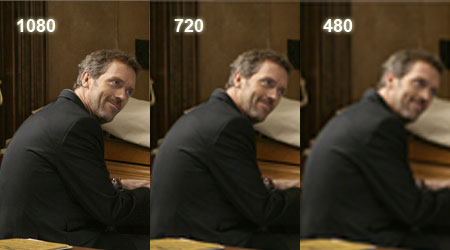
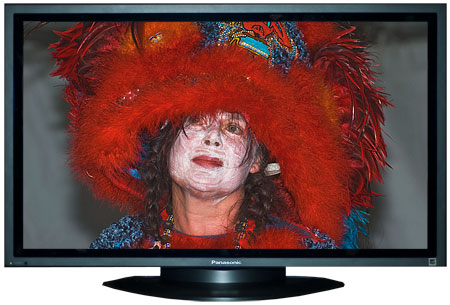

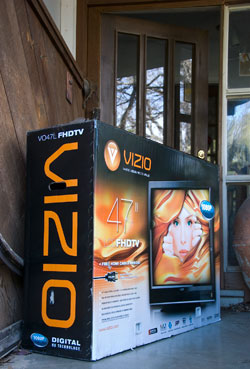
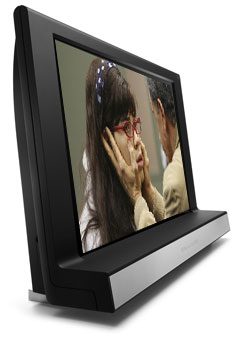
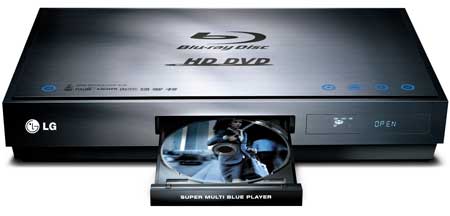
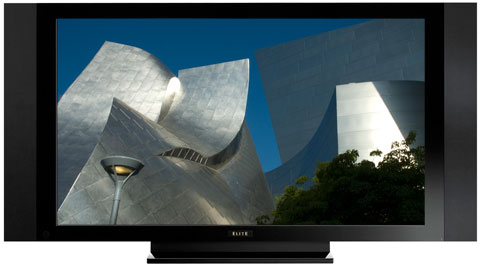
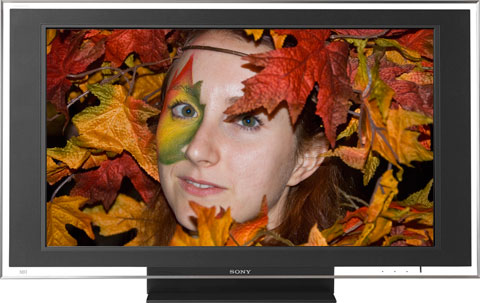
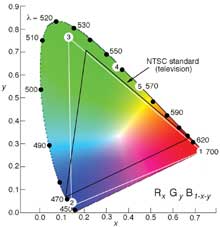
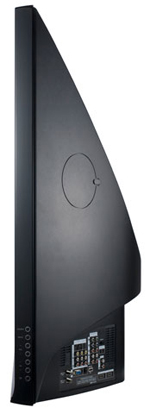
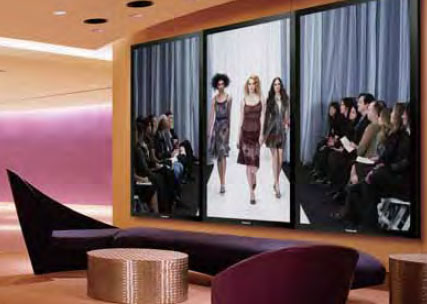
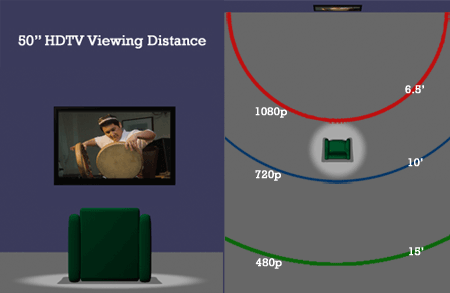
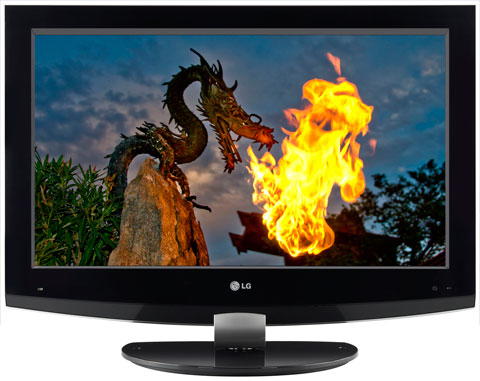
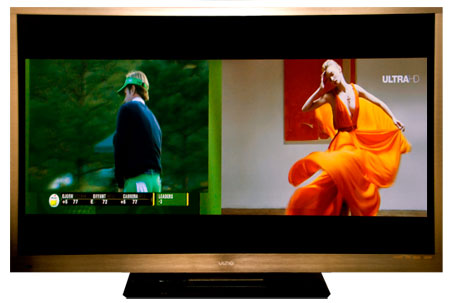
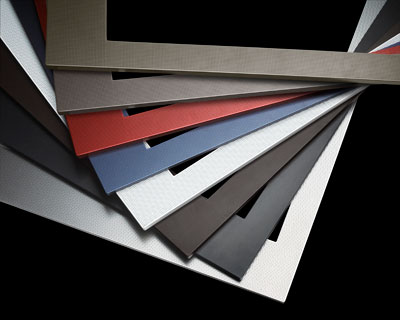
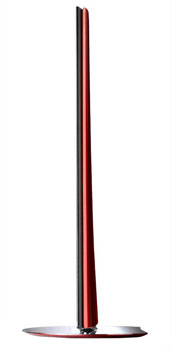
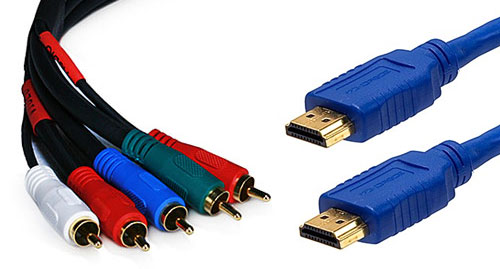
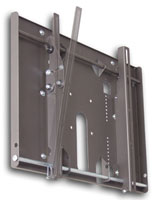
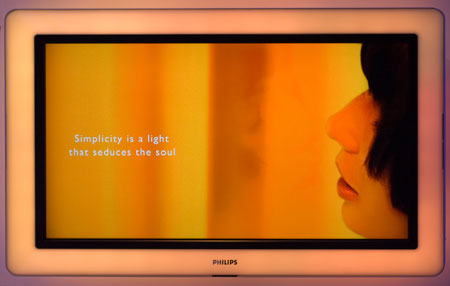

Posted Jan 5, 2017 10:45:39 PM
By Kent Hall